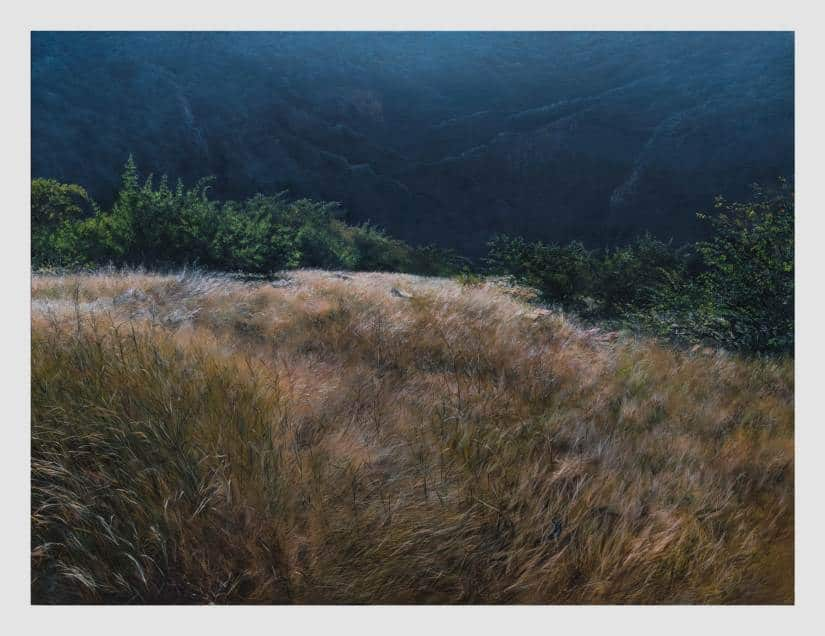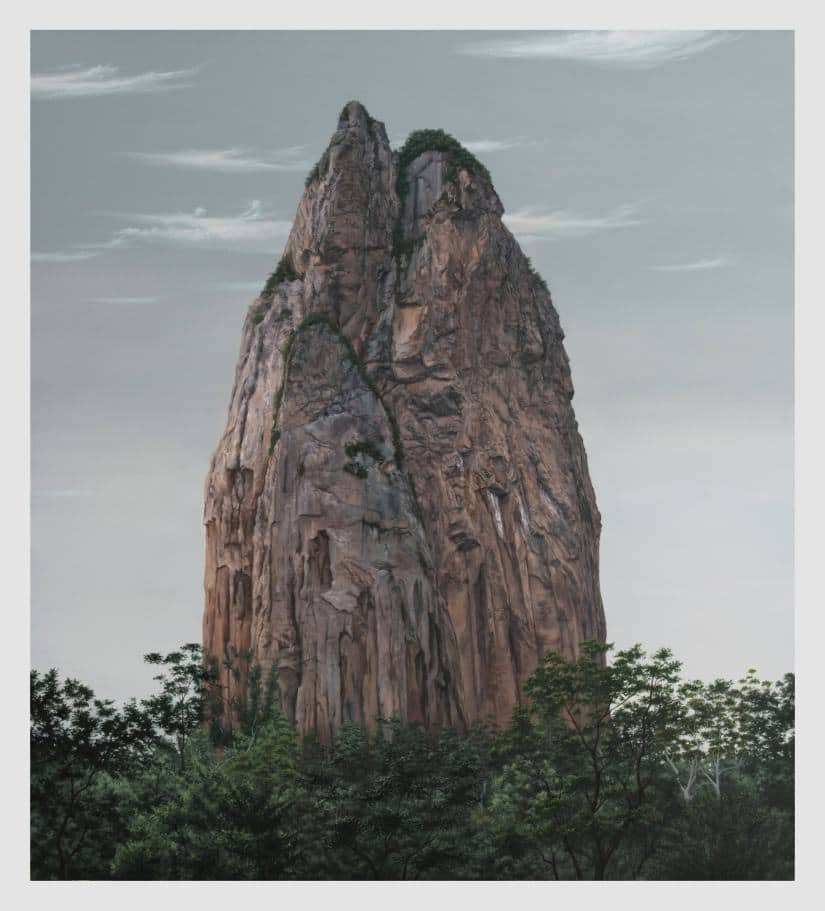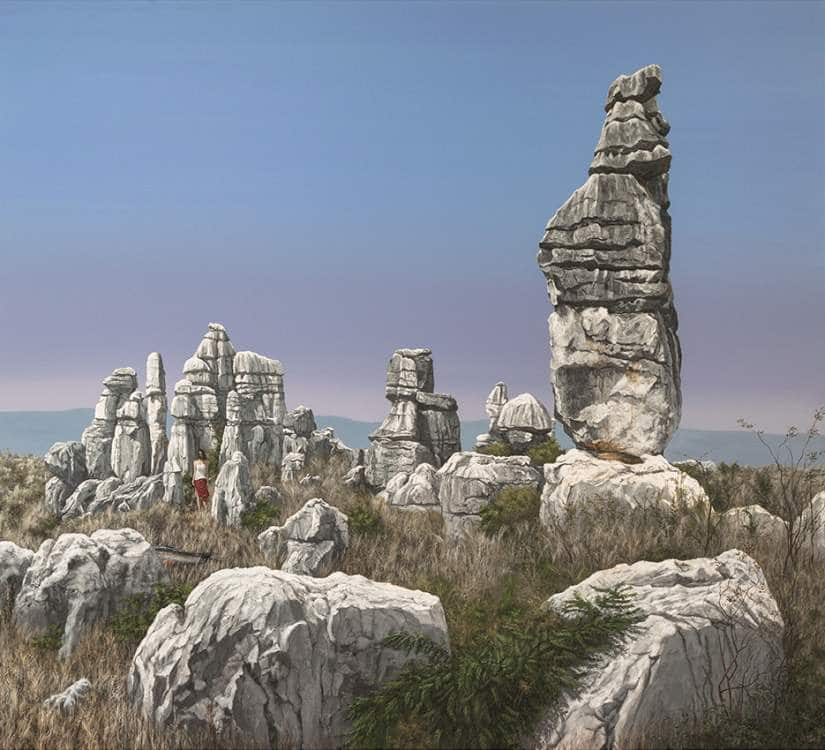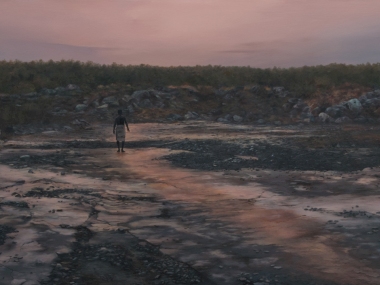Perhaps it is a bit coincidental that outside one of Delhi’s premier art galleries the living conditions and the quality of air has plummeted so alarmingly that the exhibit of a collection of paintings on nature, on the inside, comes across as painfully anomalous. Landscape painting is now considered passé. In a world full of photos the camera as ubiquitous as it is, we have neither the urge nor the will to dive back into nature’s depths other than for a selfie with its carcass. With humans moving towards the centre, nature is literally and metaphorically, at the margins, a backdrop in our lives; relevant only when events like the annual pollution crisis in Delhi unceremoniously arrives. How can one then revitalise a form that once served as evidence of our love for nature? If artist Basist Kumar’s show Gazing at Reality is prodded with that question, the answer, quite simply, would be a return to realism. [caption id=“attachment_5498331” align=“alignnone” width=“825”]  Searching Oneself Outside, by Bassist Kumar. All images courtesy Nature Morte, New Delhi[/caption] They say that sometimes to change the way you look, you need to stop looking. A century ago, the sight of a meadow would have been the very nature of enterprise in art. Today it is more of a sensorial place from where other ideas must germinate – start-ups, business models and bad novels. “As we continue to understand more about our intrinsic connections with nature — not just physically but psychologically too — we feel it as our own extension, or rather, an inseparable part of it. I think it is kind of a spiritual experience. There have been several occasions when I’ve been out practising certain gazing methods that have left me utterly overwhelmed. In these works, I have tried to bring out this stillness which also seems to be a part of the continuous transformation nature is going through,” Kumar says. That transformation, in the context of the city, would also imply erasure. [caption id=“attachment_5498351” align=“alignnone” width=“825”]  A Seekers Journey, by Basist Kumar[/caption] Kumar has trained at both Delhi’s college of Art and Santiniketan. His love for nature, rather than landscape in general, he says is born out of a need to create experiences, and not things that represent them. “I am interested in intriguing our imaginative spaces through something ordinary, as if there is more to what meets the eyes. Sometimes saying less can be more effective and so I have taken a step back from more narrative or conceptual forms to a more direct and experiential expression. I also believe that it could be conveyed in many different mediums/style and language, but painting landscape came very naturally to me,” he says before adding, “but I don’t consider myself a landscape painter.” Kumar’s paintings are several feet in height and width, some adorn complete walls. They are severely detailed to the point that they reveal different things if looked at up close. [caption id=“attachment_5498361” align=“alignnone” width=“825”]  Solitudeness, by Basist Kumar[/caption] Most of Kumar’s works are anchored or rather fizzle with elemental details; a lone photo frame, a solitary rock, a decrepit structure, all offer the shoes of a kind of solitude those living in the city would happily walk in. “Most of the landscape in my works don’t exist as they appear,” Kumar says. “Since I enjoy taking photographs, the collected images can work as my reference but it’s hard to exactly match the vision through those. So memory work is a very important aspect which actually brings everything to work for an emotional state. I do wish to paint things directly from nature but I think it will be mainly for study.” The level of detail in Kumar’s paintings is staggering, accounting even for distance and shades like replicas of sight, only with the added agency of elements that give it a sense of the surreal. Or maybe it just feels so because I haven’t seen one in a long, long time. [caption id=“attachment_5498371” align=“alignnone” width=“825”]  A Brief Offering, by Basist Kumar[/caption] Kumar’s gigantic pieces take anywhere between a month or three to complete. He draws inspiration from the likes of Nasreen Mohamedi and Odd Nerdrum but only in terms of substance, not form or context. His own after all is a little more direct, some would say, too direct for the sake of imagination. “I do use realistic treatment but it’s not what I am actually after. I am more interested in a simple image which encapsulates the abstract nature of our dimensions. I think not everybody can look at an object in the same way,” Kumar says. That abstract nature must also immediately refer to the way green pastures have disappeared from our surroundings, the air replaced by grey smoke. Abstract here must also be considered as absence. [caption id=“attachment_5498381” align=“alignnone” width=“825”]  Innocence, by Basist Kumar[/caption] While viewing these paintings, I felt the urge to wear the mask that I had until then put off doing. ‘Dying must be the new living in Delhi,’ I had told myself until then. “Our understanding of the fragility of our existence has improved. But the exploitation still continues. We must not take it for granted. I don’t know if I can bring some substantial change to this through art, or maybe I already have,” Kumar says. Being reminded of the little pauses life must take in the vacancy of old things, like the forests I once walked through and the rivulets I washed my feet in, made me feel vulnerable, like I suddenly had more to lose, than just my health. Outside, though, I saw a city tear itself to shreds from the inside. Fear, perhaps, fear is the new living, I told myself. Gazing at Reality is on display at Nature Morte Gallery, Delhi
Basist Kumar’s love for nature, rather than landscape in general, he says is born out of a need to create experiences and not things that represent them.
Advertisement
End of Article


)

)
)
)
)
)
)
)
)



